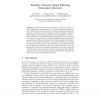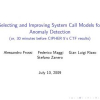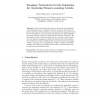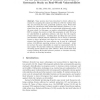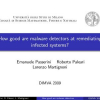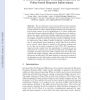121
Voted
DIMVA
2010
15 years 23 days ago
2010
Abstract. In the escalating arms race between malicious code and security tools designed to analyze it, detect it or mitigate its impact, malicious code running inside the operatin...
92
Voted
DIMVA
2009
15 years 1 months ago
2009
110
Voted
DIMVA
2009
15 years 1 months ago
2009
Drive-by download attacks are among the most common methods for spreading malware today. These attacks typically exploit memory corruption vulnerabilities in web browsers and brows...
99
Voted
DIMVA
2009
15 years 1 months ago
2009
100
Voted
DIMVA
2009
15 years 1 months ago
2009
Remote code-injection attacks are one of the most frequently used attacking vectors in computer security. To detect and analyze injected code (often called shellcode), some researc...
101
Voted
DIMVA
2009
15 years 1 months ago
2009
Abstract. Many systems have been introduced to detect software intrusions by comparing the outputs and behavior of diverse replicas when they are processing the same, potentially m...
99
Voted
DIMVA
2009
15 years 1 months ago
2009
We demonstrate that the browser implementation used at a host can be passively identified with significant precision and recall, using only coarse summaries of web traffic to and f...
118
Voted
DIMVA
2009
15 years 1 months ago
2009
107
Voted
DIMVA
2009
15 years 1 months ago
2009
The use of dynamic access control policies for threat response adapts local response decisions to high level system constraints. However, security policies are often carefully tigh...
114
Voted
DIMVA
2009
15 years 1 months ago
2009
Abstract. The Asprox infection weaves a complex chain of dependencies involving bots that perform SQL injections on vulnerable web servers, and visitors whose machines get compromi...

